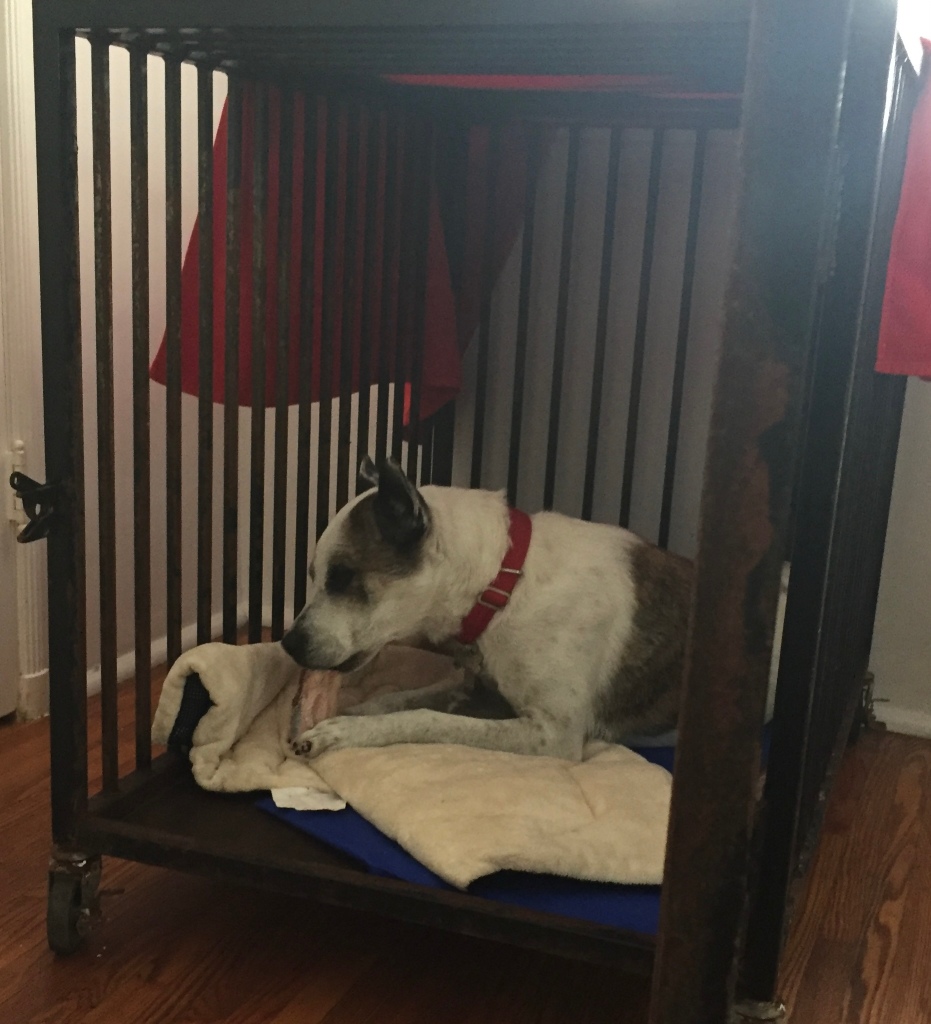This is Bret. He won the dog lottery.
When Bret was adopted, he was in a fragile emotional state. His mom knew this and made it her mission to help him. She’s devoted to Bret.

Before I met them Bret had already come a long way. Except for sleeping. He never slept deeply overnight, frequently waking up and moving to a different spot. He also paced a lot during the day when alone.
Sleep is vital for dogs. The average dog sleeps around 17 hours a day. I suspected that lack of sleep was contributing significantly to Bret’s general unease.
Once Bret’s vet ruled out pain for this behavior, I worked with Bret and his mom to build up his self-confidence, indoors and out. When I mentioned the idea of Bret having his own safe space to retreat to, especially when he’s home alone, his mom wasn’t convinced it would help him, but she gave it a shot.
Scared dogs often hide under beds or tables, behind sofas, or in bathrooms or closets when they’re unsure. Having a dedicated, comfortable, consistently safe place they can depend on is comforting to most dogs.
As the picture shows, the door to Bret’s crate is open. He has no issues with house training, chewing, or general destruction, so confinement is unnecessary. The goal of Bret’s safe space is to help him feel more secure. When dogs feel secure they sleep deeper and longer. They nap more, and they often go into their safe space with chews or toys. This almost always has a dramatic calming effect on dogs.
In addition to being therapeutic for dogs, having a comfortable, secure place dogs are familiar with and comfortable using makes living with dogs easier.

From a safety standpoint, if you have to evacuate for any reason, having a crate and a dog who’s comfortable being confined in there increases your options for places to stay with your pets. One crate per domestic animal is commonly recommended in emergency preparedness guidelines.
Bret and his mom practiced crate conditioning exercises daily, as soon as the crate arrived. In a matter of 2 weeks, he’s gone from being weary of it to voluntarily napping in there. That’s a choice Bret’s clearly making on his own and it couldn’t have happened, if the crate wasn’t available to him.
Dee Green has been a professional dog trainer and canine behavior consultant for more than 20 years. She specializes in puppies up to 18 months, and fearful, anxious and reactive dogs of all ages.
©️Dee Green, 2023
